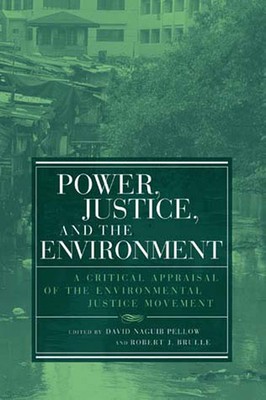
- We will send in 10–14 business days.
- Publisher: MIT Press
- ISBN-10: 0262661934
- ISBN-13: 9780262661935
- Format: 15.5 x 22.9 x 2.3 cm, softcover
- Language: English
- SAVE -10% with code: EXTRA
Power, Justice, and the Environment (e-book) (used book) | bookbook.eu
Reviews
Description
For almost 30 years, the environmental justice movement (EJM) has challenged the environmental and health inequities that are often linked with social inequities, calling attention to the disproportionate burden of pollution borne by low-income and minority communities. The successes of the movement have been celebrated, and the EJM's impact on the direction of environmental policy, research, and activism is widely acknowledged. But the literature on environmental justice lacks a real assessment of the movement's effectiveness. This book provides just such a critical appraisal, examining the EJM's tactics, strategies, rhetoric, organizational structure, and resource base. With chapters by both scholars and activists, the book links theory and practice with the aim of contributing to a more effective movement. Power, Justice, and the Environment looks first at the progress, failures, and successes of the EJM over the years. A comparison with the Civil Rights movement draws some provocative conclusions. The book next focuses on the development of new strategies and cultural perspectives, considering, among other topics, alternative models for community mobilization and alternative organizational structure. Finally, the book examines the effect of globalization on environmental inequality and how the EJM can address transnational environmental injustices.
EXTRA 10 % discount with code: EXTRA
The promotion ends in 17d.06:48:15
The discount code is valid when purchasing from 10 €. Discounts do not stack.
- Publisher: MIT Press
- ISBN-10: 0262661934
- ISBN-13: 9780262661935
- Format: 15.5 x 22.9 x 2.3 cm, softcover
- Language: English English
For almost 30 years, the environmental justice movement (EJM) has challenged the environmental and health inequities that are often linked with social inequities, calling attention to the disproportionate burden of pollution borne by low-income and minority communities. The successes of the movement have been celebrated, and the EJM's impact on the direction of environmental policy, research, and activism is widely acknowledged. But the literature on environmental justice lacks a real assessment of the movement's effectiveness. This book provides just such a critical appraisal, examining the EJM's tactics, strategies, rhetoric, organizational structure, and resource base. With chapters by both scholars and activists, the book links theory and practice with the aim of contributing to a more effective movement. Power, Justice, and the Environment looks first at the progress, failures, and successes of the EJM over the years. A comparison with the Civil Rights movement draws some provocative conclusions. The book next focuses on the development of new strategies and cultural perspectives, considering, among other topics, alternative models for community mobilization and alternative organizational structure. Finally, the book examines the effect of globalization on environmental inequality and how the EJM can address transnational environmental injustices.


Reviews